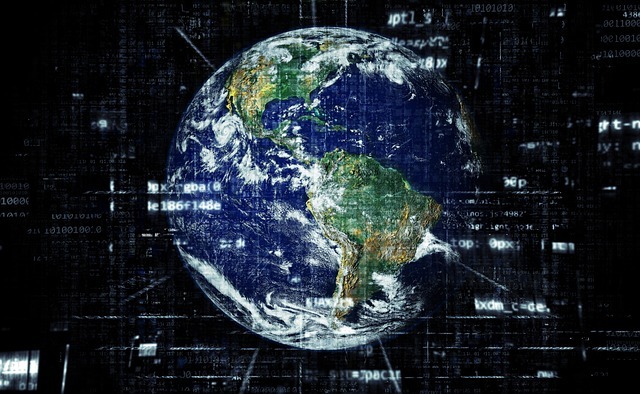
Nov 10, 2023
Geopolitical Risk: Navigating the Uncharted Waters
Geopolitical events today unfold at a pace unseen in modern history, fueled by rapid technological change and socioeconomic transformations sweeping the world. The interconnected nature of the globalized system means disturbances in one part of the planet no longer stay confined within political boundaries. Supply chains are disrupted, markets fluctuate wildly, and instability spreads digitally at the speed of an internet connection.
No country is immune from the ripple effects of rising tensions between great powers. As strategic competition intensifies between the United States and China, their influence is being felt by nations small and large. developing nations find themselves pulled into orbit of these competing geopolitical spheres through infrastructure and trade deals, affecting their autonomy on the world stage. Even distant conflicts like those in the South China Sea or Russia’s war in Ukraine have cascading economic consequences beyond their immediate regions.
Global challenges like pandemics, climate change and cyber threats similarly pay no heed to man-made borders. Coordinating multilateral responses has grown more difficult as unilateralism and Great Power rivalry take hold. The COVID-19 crisis starkly illustrated the fragility of interconnected systems and economies when any one part falls into hardship or disorder. Future health, environmental and security crises will continue testing models of international cooperation versus strategic competition.
For businesses, holistic risk assessment has become crucial to not only gauging direct exposure in overseas markets but also anticipating knock-on effects of geopolitics elsewhere. Complex supply chains may be disrupted by factors outside any single link. Commodity and currency markets fluctuate on political headlines. Consumer demand shifts under the weight of global uncertainties. Even reputational risks can multiply through social media networks spreading news of conflicts and human rights issues instantaneously.
In this uncharted geopolitical environment, no single actor controls destiny. But with care, consideration and cooperation despite divisions, humanity’s shared future remains bright. By accounting carefully for risks outside direct areas of control, and fostering multilateral efforts wherever possible, both governments and companies can navigate these choppy waters to realize new opportunities wherever stability and prosperity take root.
Defining Geopolitical Risk
Geopolitical risk encompasses a diverse range of uncertainties that businesses must account for in strategic planning and daily operations. While traditionally focused on conflicts and security issues, the notion of geopolitics has evolved to recognize economic and social dimensions. Today’s geopolitical risks involve not only military tensions but also non-kinetic factors like trade policy, energy and commodity prices, infrastructure and technology access, public health crises, environmental stressors, and human rights concerns.
These diverse risks originate from diverse sources – actions of national governments but also sub-state and transnational actors operating in politically fragile environments or contested regions. Assessing exposure means examining direct operations and supply chain links in at-risk areas, as well as considering indirect effects through commodity and financial markets, regulatory changes, travel restrictions, cyber attacks and more. Even distant conflicts or domestic political unrest half a world away can generate supply shocks, sanctions, capital flight or shifts in demand that transmit globally through integrated systems and networks.
No single firm possesses perfect foresight on how political decisions or disorderly events will play out and impact connected economies and societies. An adaptive, multidisciplinary approach to risk management becomes essential – blending political, economic and cultural insights with business intelligence and scenario planning. Continuous monitoring of risk indicators allows nimble responses, while engagement and diversification strategies build resilience. Public-private partnerships also help shareholders understand evolving safety, sustainability and reputational challenges confronted by operating globally.
By rigorously defining their geopolitical risk appetite and exposures, companies large and small can make informed choices to seize opportunities wherever stability and cooperation thrive, while avoiding or insuring against disruptions outside their control. This process supports sustainable, long-term participation in an ever more complex and interdependent world.
Historical Perspective
Examining history through a geopolitical lens reveals both recurring patterns and novel facets of risk posed by each era. The post-World War II period saw the rise of new superpowers and emergence of proxy conflicts that rippled across regions as the US and USSR jockeyed for ideological and strategic influence. From the Korean War to interventions in Latin America and the Middle East, military tensions and the export of opposing political systems disrupted stability and commerce alike.
The post-Cold War period brought respite from superpower rivalry but also new uncertainties. As former Soviet republics and Yugoslav nations transitioned to independence, some navigated this change peacefully while others descended into ethnonationalist violence and state fragmentation. Economic globalization also accelerated risks from financial crises and currency devaluations sparking capital flight and supply disruptions. Events in one country like the Asian Financial Crisis of 1997 rapidly multiplied geopolitical headwinds for trade dependent economies worldwide.
Recent decades show how complex emergencies like the Syrian civil war or instability spilling from Libya generate not only refugee crises but also empower non-state threats like terrorist groups. The energy market implications of conflicts in oil-producing regions additionally spread volatility. Meanwhile, rising powers challenge old orders through political and economic means, intensifying geoeconomic competition that clashes with established alliances and supply dependencies.
No era remains frozen in time – new factors like climate change impacts, cyber warfare capabilities and technological disruption portend risks yet unknown. But with awareness of history’s hardest lessons, from empires toppling to ideologies clashing to weaker states collapsing, a multidimensional view of geopolitics equips observers to delineate risk amid ever-shifting variables and black swan events.
Current Global Hotspots
Several ongoing flashpoints pose acute geopolitical risks that merit close monitoring. In the Middle East, the long-simmering Israeli-Palestinian conflict continues lacking resolution while the war in Yemen has created a severe humanitarian crisis. Tensions also remain high between Iran and Gulf states opposed to its nuclear program and influence operations.
Elsewhere, Russia’s unlawful annexation of Crimea from Ukraine in 2014 set off a proxy conflict in the Donbas region that remains unresolved, straining relations with Europe and NATO. Moscow’s assertive foreign policy amid this crisis and its military intervention supporting Assad in Syria’s multi-sided war have exacerbated regional volatility.
Along the frontier between India and Pakistan, ongoing territorial disputes in Kashmir fuel instability—with skirmishes periodically flaring into broader conflict. Militancy emanating from unstable areas in both countries pose security challenges.
Across the Taiwan Strait, China’s increasingly overt aims to bring the democratic island under its control are a prime driver of U.S.-China strategic rivalry with significant global economic implications if miscalculation were to spark conflict. North Korea’s nuclear brinkmanship and human rights abuses also stir tensions.
In Africa, terrorist insurgencies and ethnic violence plague countries like Somalia, Mali, Nigeria and the Central African Republic. Economic migration flows from such areas of upheaval further stress social cohesion abroad.
Careful assessment and mitigation of risks originating in global hotspots requires sustained multilateral diplomacy, humanitarian aid, anti-corruption efforts and policies advancing regional stability and prosperity over the long term. No single actor controls outcomes, but coordinated efforts can reduce tensions and support prospects for just, durable solutions.
Economic Ramifications
Geopolitical tensions often ripple through economic systems through various transmission mechanisms. While markets may appear driven primarily by facts on the ground like earnings reports or macroeconomic indicators, undercurrents of geopolitical uncertainty also move prices in unseen ways. Political turbulence ranging from U.S.-China trade disputes to unrest halfway around the world can disrupt supply chains, investment patterns and commodity flows with tangible consequences for business and national economies alike.
Financial assets like currencies and equities experience volatility when geopolitical events alter investor risk calculations almost in real-time. Major military conflicts, shows of force, sanctions episodes and signs of regime instability prompt shifts of massive capital flows with little notice. The reputational risks faced by multinational companies during human rights controversies or getting caught up in political spats also influence their commercial prospects and valuations significantly.
Key commodities from oil to food to rare earths experience wild gyrations based on tensions in major production or transit regions, impacting prices globally for producers, manufacturers and consumers. Shipping lanes and infrastructure projects connecting trade partners emerge as strategic interests subject to political leverage, complicating commercial predictability. Even long-term economic forecasts factoring demographic and technological changes must account for the “geopolitical growth premium” affected by disruptive events outside economic ministries’ control.
While some geoeconomic disruption cannot be avoided given the complexity of overlapping systems, incorporating geopolitical scenario planning into both micro and macro strategy helps mitigate risks. Options include diversifying supply sources, building alternate trade routes, hedging currency exposures, and maintaining geographically distributed assets. In this new age of “geo-economics”, sustained prosperity increasingly demands marrying economic and geopolitical acumen.
Technological Challenges
Technology has unquestionably transformed the character of geopolitical risk in profound ways. While delivering tremendous benefits to global connectivity and economic growth, the digital domain has also emerged as a new frontier for strategic competition and conflict between states.
Cyber threats ranging from espionage campaigns to destructive malware attacks now command concern from policymakers and C-suites alike. As infrastructure and commerce become increasingly reliant on networked technologies, hackers sponsored by foreign governments or extremists group pose acute and asymmetric dangers to both public and private networks. Securing critical systems and data while respecting privacy becomes an existential challenge for all sectors in the cyber age.
Moreover, emerging technologies like artificial intelligence, biotechnology and advanced materials hold disruptive economic potential but also stoke cutting-edge rivalry between nations vying to take early leads. From setting research standards to supply chains to talent recruitment, geopolitics influences both development and distribution of next-generation innovations in unseen ways.
Firms must thoughtfully manage exposure to strategic competitors in certain markets and supply partners while protecting intellectual property and customer data according to rigorous compliance. Public-private cooperation to establish ethical, security-focused global tech governance also becomes prudent to help consolidate democratic norms in new warfighting domains.
As technological frontiers shift geoeconomic balances of power, vigilance and resilience-building can help businesses thrive amid inevitable disruptions. A holistic, strategic view of technology’s myriad links to geopolitics equips risk managers for emerging challenges.
Corporate Preparedness
You make an excellent point. Geopolitical risk management demands a holistic, forward-looking approach matched to each firm’s circumstances and risk tolerance. Let us explore this topic further.
Multinational corporations have leveraged various strategies to build resilience against geopolitical disruptions through agile scenario planning and diverse operational footprints. Some maintain geographically distributed supply networks, regional inventories and alternate logistics routes to dilute dependencies on high-risk areas. Others pursue geographic diversification in sourcing needs, talent pools and market exposure through balanced international portfolios.
Proactive stakeholder engagement also proves invaluable, whether cultivated relationships with policymakers to mediate disputes or community programs building social license alongside physical plants. Many find that impartial support for open trade, rule of law and multilateral cooperation through industry associations promotes sustainable, depoliticized business environments over time.
Vigilant monitoring of early-warning political and economic indicators allows timely moves when tensions flare. Dynamic risk mapping and war-gaming administrative scenarios prepares leaders to consider unforeseen risks and second-order effects, empowering swift, considered responses. Where tensions cannot be entirely avoided, political risk insurance provides a financial backstop.
Overall, a preventative, multidisciplinary mindset serves businesses best – blending commercial acumen with diplomatic and geopolitical awareness. No single approach suffices, but with care, intelligence and principled cooperation, companies of all sizes can identify risk mitigation measures aligned with their strategic objectives and stakeholder priorities. Global stability and prosperity are mutually reinforced by such prudent corporate preparedness.
Impact on Supply Chains
You raise an important point. As production networks stretch across borders and oceans, geopolitical tensions pose hidden risks for both manufacturers and consumers alike. Let us delve deeper into how businesses can strengthen supply chain resilience.
In times of crisis like the COVID-19 pandemic or regional conflicts, major supply chain disruptions swiftly reverberate through the global economy. Price shocks in key commodities from wheat to rare earths also stem from political instability half a world away. With infrastructure and transport links serving as strategic targets, maintaining fluidity of international trade depends on stability.
Leading companies recognize both opportunities and obligations in responsibly managing extensive supplier networks. Some introduce multiple regional and local sourcing hubs, backup inventory stockpiles, alternate transport modes like trucking or rail, and supplier auditing/development programs. Such geographic diversification dilutes political interruptions while building supplier reliability.
Information sharing via industry consortiums helps identify emerging risks in new markets, enabling proactive engagement or facility relocations well ahead of disturbances. Relationships with export credit agencies further provide financial safeguards against non-commercial perils disrupting partner operations.
Overall, a preventative, multilateral perspective helps bolster supply chain resilience amid inevitable geopolitical turbulence. Business leaders remain best positioned to spearhead pragmatic cooperation reducing systemic interdependencies, while forging resilient yet responsible networks supporting communities worldwide. With care and foresight, prosperity continues its march despite friction elsewhere.
Social and Cultural Dynamics
Cultural and social dimensions are often underappreciated facets of geopolitical risk that merit thoughtful consideration. You raise an insightful point – political volatility does not merely rearrange borders or balance sheets, but profoundly affects human lives and communities and the fabric of societies in unseen ways.
Events triggering mass displacement like conflicts or climate change impacts strain host populations and destinations alike, testing social cohesion. But they also spark resilience and empathy as strangers from varied backgrounds support one another. Meanwhile, strategic competition invoking nationalist fervor online can polarize public discourse, weakening consensus for prudent policies.
However, crises too present opportunity. Companies seeing social impacts firsthand leverage expertise and resources for civic betterment. Some spearhead skills training for vulnerable groups, ensuring dignity and mobility amid upheaval. Others supply relief or foster exchange with affected trade partners, strengthening multicultural bonds.
Leaders stay attentive to perspectives from diverse publics, ensuring diverse voices shape prudent solutions. Decision-making aligned with universal principles of equity, fairness and humanity builds legitimacy for stability over the long term. And enterprises enabling open access to information and connection tools empower communities to build understanding despite manipulative forces.
In all, with care, prudence and integrity, even periods of upheavalseed wiser, more inclusive growth. By standing in solidarity with all peoplestouched by global events, and helping cultivate compassionate, competent societies, stability and prosperityfind renewed footing. Our shared future remainsbright.
Environmental Considerations
The challenges presented by climate change and other environmental threats span political boundaries and demand coordinated solutions. However, navigating such cooperative efforts requires nuanced consideration of diverse priorities and circumstances.
Resource constraints exacerbated by global trends like population growth, urbanization and rising living standards stoke geopolitical competition in sensitive domains from water to energy to land. Yet unilateral maneuvers risk confrontation over assets vital for all humanity.
Simultaneously, climate impacts dreadfully magnify instability in already vulnerable regions – intensifying droughts, storms and sea level rise displacement compound political stresses. Achieving economically-sound emissions reductions then tests international consensus against fractious short-term interests.
Still, by reframing shared environmental risks as a platform for mutually-assured progress, cooperative opportunities also emerge. Multilateral infrastructure and technology initiatives can strengthen climate resilience worldwide while stimulating sustainable commerce. Market-driven shifts toward renewable solutions autonomously diffuse strategic dependencies on carbon exports.
Overall, an empathetic, solutions-oriented approach respects all perspectives and privileges non-coercive cooperation. With open dialogue upholding scientific facts and our common future, equitable policybalances social-economic needs against moralclimate imperatives.And global partnerships turnsustainability into a wellspring for stability, equity and new prosperity wherever people strive in unison.Our brighter dawnremainswithin reach if cultivation compassionate resolveand practical good faith.
Diplomacy and Conflict Resolution
Diplomacy remains the most prudent path toward geopolitical stability, though its success often proves challenging amid complex realities on the ground. You raise a thoughtful point – by scrutinizing histories where level-headed diplomacy helped ease tensions, we gain perspective on constructively managing risks ahead.
In some cases, neutral third-party mediation through stalwart multilateral bodies calmly guided disputants toward conciliation. Elsewhere, previously polarized rivals independently chose engagement and mutual understanding over estrangement through open dialogue. At other times, crisis de-escalation necessitated stressful yet strategic military posturing paired with ceasefires permitting talks in an atmosphere of reduced threat.
Across variegated scenarios, certain approaches resonate. Respecting all societies’ ethnic, political and security interests while privileging nonviolence. Building trust incrementally through confidence-building measures as sovereignty disputes simmer slowly toward equitable solutions. Leveraging intertwined economic interests to disincentivize escalation tendencies, cushioning political compulsions toward stability.
Overall, prudent statesmanship prioritizes problem-solving over point-scoring, seeing opponents as fellow inhabitants of our interdependent world rather than irreducible enemies. With good faith, care and time, formerly irreconcilable divides find pathways toward dignified peace, cooperation and shared prosperity. Though challenges persist, past proves diplomacy’s surest means for nations and peoples to live cooperatively amid disagreement. Our future remains bright if cultivated with vision, courage and resolve befitting our shared home.
Media’s Influence
You make an thoughtful observation. Information stewardship matters acutely amid geopolitical tensions, lest misunderstanding breed further conflict. Let’s explore how noble principles can best serve seeking truth and reconciliation.
In an age of boundless data, discerning credible facts from facile falsity proves ever challenging. But diligent reporting prioritizes verification, context, and balanced perspectives while respecting privacy and impartiality. Where motives remain mixed, prudent outlets convey uncertainty with care rather than fuel polarization prematurely.
During emergencies especially, calm delivery of confirmed aid resources reassures without panic. And whilst some turn sensations into spectacles, responsible journalism illuminates humanity’s shared hopes beneath divisions, nurturing compassion even for “others”.
Moving discourse forward likewise demands hearing multiple voices, including critics and marginalized groups. For achieving just, durable resolutions necessitates inclusive consensus, lest built on unstable foundations.
In all, with integrity guiding each step, the watchman’s role nourishes informed participation in solutions, not needless fears. Truth and reconciliation find footing through patience extended to all sides seeking it sincerely. And through such noble service, unity emerges from times that could have torn further asunder. Our growing light depends on stewarding hopes wisely, as one people joined by bonds more resilient than transient doubts.
Humanitarian Consequences
Humanitarian impartiality warrants the utmost care amid tensions stirring political passions. You raise a sobering point – geopolitics’ impact cascades far beyond maps, stretching to each life bearing hopes tucked quietly away.
In unstable areas where adversity strikes hardest, non-partisan aid remains a moral duty for all. Responding capably to crises like displacement, poverty or disease alleviates suffering’s grimmest tolls wherever people quietly strive.
Yet attentiveness prevails over expediency alone. Local communities’ self-determination and dignity matter as aid shapes recovery. Sustainable support strengthens capacity rather than dependency. And neutrality precludes leveraging charity for ulterior ends inflaming further crises elsewhere.
Principled partnership across boundaries also proves a virtue – whether relaying urgent needs, safely transporting relief or developing resilient livelihoods. For politics’ storms disrupt little cared about realities most, any hand extended shares our shared stake in one another’s wellbeing.
In all, humanity’s shared hopes rise above considerations spurring earthly disputes. With compassion guiding deeds instead of interests, vulnerable lives upheld becomes reconciliation’s surest seed wherever hope risks fading most. Our conscience then responds not to anxieties amid turmoil but to fellow souls’ quieter call, bringing light however darkness briefly lingers.
Future Trends
Foresight remains a prudent quality for weathering uncertainty, though humility guides its embrace. You raise an astute point – by peering carefully into the confluence of trends, risks come into clearer relief against their historical roots, sharpening understanding.
Complex systems evolve subtly even as structural shifts emerge. Climate impacts intensifying, ocean currents rerouted stir patterns affecting weather to borders. Resource nationalism ascending where scarcity bites meets globalization maturing, each straining cooperation in kind.
Yet interdependence tightens too, as survival depends on stability across distant storms. Common challenges like pandemics demand amity outpacing past divisions, just as sustainable prosperity blurs lines between “security” spheres. And technological wonders promise unprecedented consilience across borders if uncoupling knowledge from want alone.
Above all, our young century’s unfolding proves unwritten. While prudence avert rapids unseen, optimism’s beacon lights solutions where fear stirred isolation. For wherever people preserve compassion’s call above power’s transient claims alone, stability proves attainable however turmoil threatens horizons nearer. Our shared hopes remain secure if resolve for one another stays foremost in mind and deed.
Foresight aids navigation – but togetherness’ spirit steers calamity’s severest waves toward brighter shores ahead, where all find ample space amid uncertainty’s terrain too changeful for any to shape unilaterally. Our future awaits building wisely, step by patient step, as one.
Individual Risk Management
Though global currents stir beyond any individual’s channeling, responsibility for self and community remains. Let’s consider how prudence and care safeguard livelihoods amid shifts elsewhere.
Families undertake vital roles shielding lives from squalls outside manageable scope. Prepared households stock essentials and savings against foreseeable stresses, seeking stability permitting neighbors’ support if turbulence strikes.
Communities too cultivate resilience through mutual understanding and aid networks. Connections across differences prove shelters stout when dominoes fall, as hands extended outward shore others inwardly tide when exposures arise unexpectedly.
Information discernment aids navigation, yet mental reserves matter more – data avalanches intimidate less those sheltered by patience and principles guiding steps with integrity. Calm prevails where fear finds no fertile soil in hopeful hearts resolute in humanity’s shared good.
And while direct influence proves limited, democratic participation and activism realize change through conscience and solidarity. By privileging nonviolence and cooperation over claims fraying civic bonds, each stitch restitches the fabric sheltering all from without and within alike.
Preparedness thus arises from relationships cultivated intimately first, outward from there. With care for self and others as one people under skies shared in peace, stability permeates divides circumstance may impose from afar, but hearts unite too closely to divide permanently. Our resilience grows greatest together.
Conclusion
While uncertainties persist, togetherness remains the surest stabilizer, as resilience grows not in isolation but through our shared fate.
No one alone shapes winds stirred by forces vast – yet each kindness extended fortifies where fear may enter softly. Together, our vigilance sees more keenly threats implicit to some within society, and shoulders lighter those burdens might prove for others standing gallantly alongside.
By disciplinary bounds our knowledge deepens, but wisdom blossoms broader through humility and open hands. Common dreams proved stronger yet than transient doubts ever will – and in hope united, stability finds surest roots whatever storms may arise.
Though horizons hold unknowables, our highest calling remains clear: To shelter lives wherever vulnerability threatens, buoy hopes up from hardships weighing any down, and affirm with every act humanity’s shared home however turbulence may trouble it transiently.
If guided by conscience, foresight and fellow-feeling nourished through stern and plenty times alike, our destinies remain secure indeed. For anchored in compassion’s depths no waves can reach, a brighter dawn yet awaits building side by side, as one. Our fortunes rise and fall together – thus found their surest mooring yet.
Nourish Your Intellect: Dive In!

How To Get Financial Freedom: Escape the Herd for Lasting Success

Legalized Food Poisoning: America’s Toxic Diet by Design

“””Investing for dummies”””: Follow The Trend

Executive Compensation Driving Share Buybacks

Illusions of Economic Recovery: Negative Interest Rate Controversy

Mastering the Trading Range: Unlocking the Potential for Explosive Gains

The Golden Symphony: Unveiling the Dynamics of the Gold to Silver Ratio

Inside the Market Psychology Cycle: Unveiling Trends and Tactics

South China Sea Showdown: Intensifying Heat on the Horizon

Will the Stock Market Crash: Analyzing Possibilities and Implications

China Quantitative Easing: Battling Economic Slowdown

What is Data Manipulation: The Dark Side?

Corruption in China: Government’s Aggressive Crackdown on Wrongdoings

These Are The Things That Scare Americans The Most



